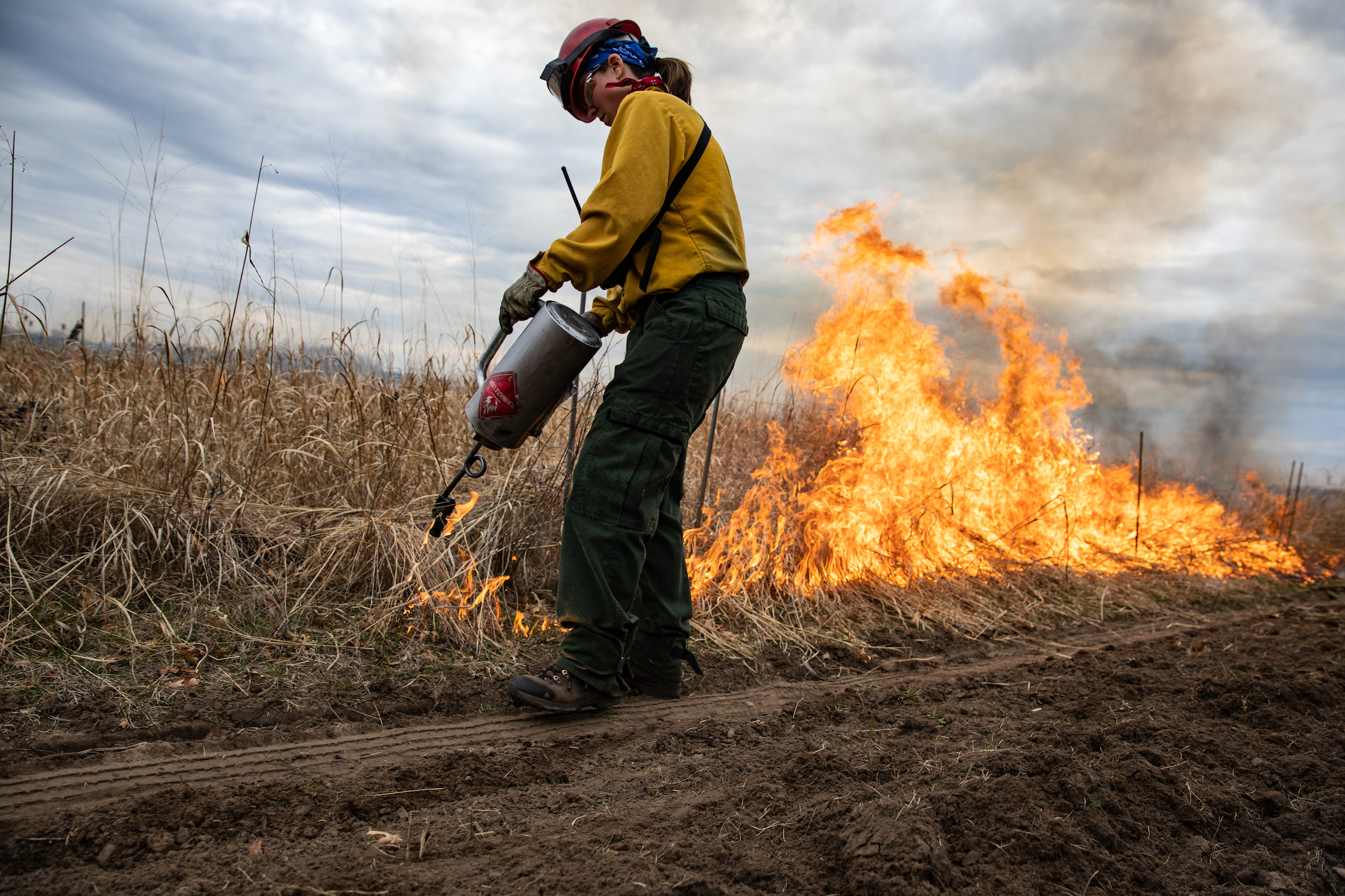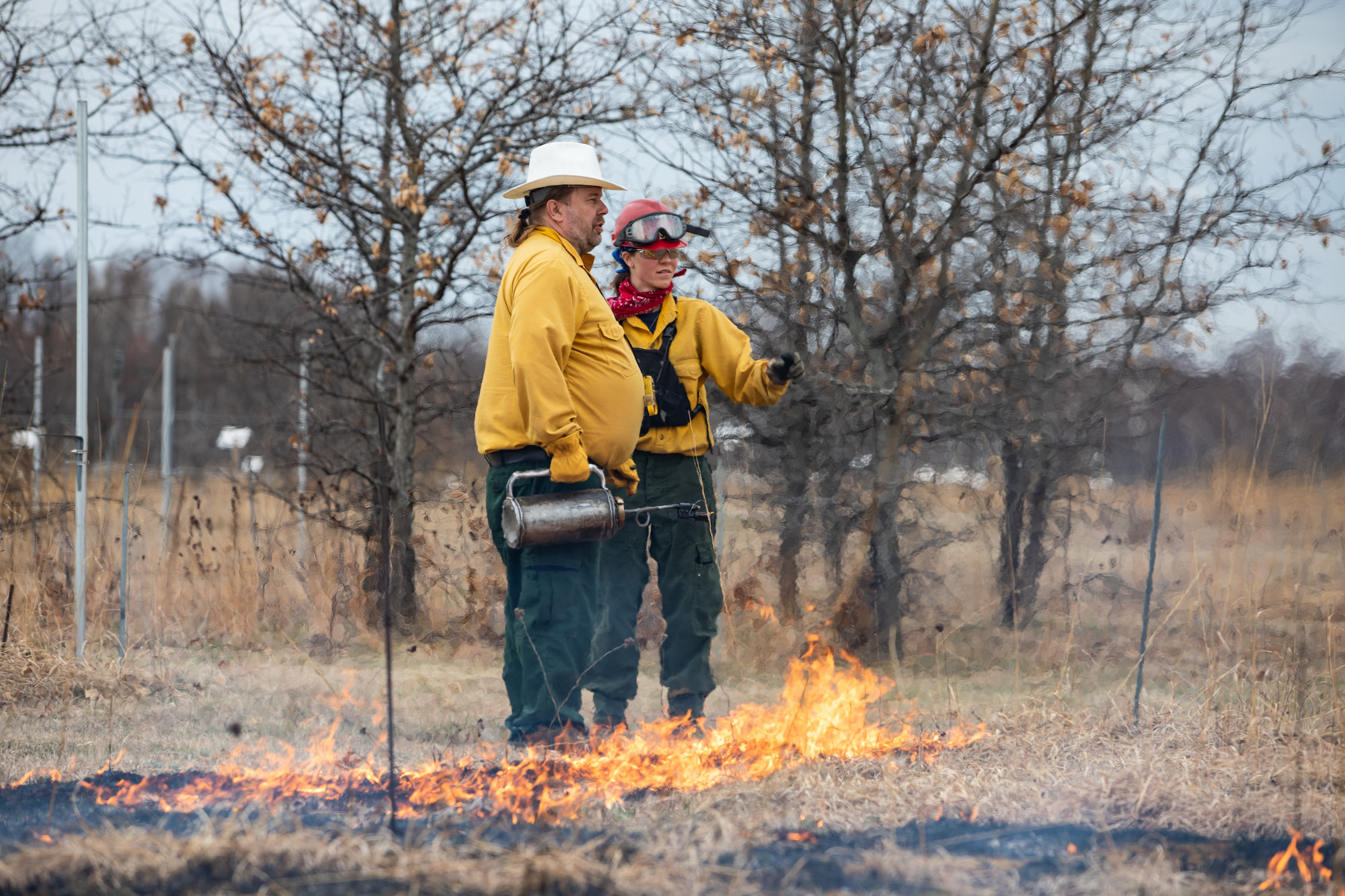Kally Worm leads the charge on managing one of nature’s most dangerous elements, for good.

Each spring as the plants start to awaken from their winter slumber, the team at Cedar Creek Ecosystem Science Reserve looks to a few of these reawakening biomes with a different idea in mind: destruction. At least once per year, the field station’s fire team conducts prescribed burns at locations across the property as part of a years-old experiment to better understand the role of fire in maintaining prairie and oak savannas. While prescribed burns are critical for preserving some of the field station’s ecosystems, as well as maintaining a number of research projects, there’s much more to the burns than just lighting some plants on fire and watching it go.

“You are my extra eyes and ears out there,” says Kally Worm, talking to her colleagues above the rumble of the truck and all-terrain vehicle engines that will transport the water tanks, sprayers and emergency equipment for the burn. “If you are uncomfortable with something you see, let me know.”
Worm is a research coordinator at Cedar Creek, managing the research and interns that work on the Big Biodiversity experiment at the field station. But every spring, she also leads the charge on the burn that makes its way across the enormous field of 10 foot by 10 foot plots.
“It is incredible to see how quickly the landscape can change when we add a fire regime,” she says.

Donning flame-resistant clothes, smoke-grey glasses, a construction helmet, her radio pouch and a red bandana, Worm directs traffic as the team makes their way along the outside of the Big Biodiversity experiment burn. The team first lights the plots on the exterior of the field, creating a buffer from the remaining unlit areas and the edge of the experimental area before starting the whole field on fire.

“We are constantly monitoring the temperature, humidity and wind speed since those factors greatly impact the fire behavior,” says Worm. “I make adjustments to lighting speed as well as the pace of monitoring when the weather changes or if we move into an area of more intense fire, such as tall grass or downed trees and brush piles.”
While taking a course in fire safety and learning from colleagues at Cedar Creek, experience has been one of the best lessons in managing a burn team for Worm.

“I always respect fire and what it is capable of doing,” she says. “The fear fades as I trust in the people working alongside me to watch my back as well as the fire. Experience has also taught me a lot about what I can do safely and what the limits of safety are while working on a prescribed burn.”